[Editor's note: In this Tyee Solutions Society series, Chris Wood profiles what death row looks like for endangered species and their landscapes in three Canadian provinces.]
The sound of water is loud in a land muffled by snow. No human sound penetrates this broad valley between tapering extensions of the Rocky Mountains, 100 kilometres southwest of Grande Prairie, Alberta.* A stray beam from the low winter sun washes the landscape in pink. A young doe caribou makes her way to the water. She's thin, ribs visible beneath her winter coat. At the water's edge she lowers her head to drink.
Suddenly grey shapes burst from the shadows. The swiftest comes racing over her own hoof-trail, leaps and sinks sharp teeth deep into her haunch, lacerating ligament. Within minutes, the doe's struggle is over. The wolves settle in to eat.
For Alberta's foothills caribou, death row is a fraying triangle of pine, spruce and aspen forest and meadows, stretched along the eastern slope of the Rocky Mountains and running roughly from Banff, west of Calgary, some 630 kilometres north and west over the provincial border into British Columbia. A broad thumb of forest thrusts east toward Slave Lake.
A second area with a similar ecological community, not quite as large, straddles the provincial borders north of Fort St. John, B.C. Anchored on Alberta's Chinchaga Wildland Park it holds the headwaters of the Hay River. The two areas are isolated from each other by the trans-border Peace River and its development corridor of gas fields, forest mills and a soon-to-be-built third hydroelectric dam and reservoir on the river.
An expanse of 120,000 square kilometres, the size of Nicaragua or North Korea, might seem roomy enough to provide security for wildlife. But only about five per cent of that area enjoys some form of protection, the biggest chunks in Banff and Jasper National Parks. Outside those areas' boundaries, Alberta's foothills are open for ranching, forestry and mineral extraction.
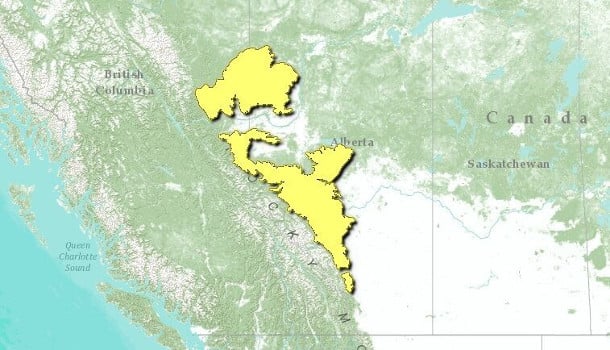
When you're an animal like the foothills caribou, larger than a full-grown lama with an extended family that can run into hundreds of individuals, you need your space. More than that, you need a certain kind of space: a large-scale mosaic of thick forests, more open woodland and meadows. The same is true for scores of other creatures that became adapted to the particular mix of landforms and weather and other plants and animals, as well as its regular disturbance by forest fires and seasonal river floods, that emerged here over thousands of their generations before European settlers arrived.
Threatened 'refugees'
The caribou is not the only species making a last stand in the shifting scraps of shelter the Alberta foothills forest still offers.
It's also one of the last havens east of the Rockies for the Grizzly Bear. Not, as most people think, originally a forest-dweller, Grizzlies were the uber-predators of the open prairies before those were surveyed off into square-mile sections for farming.
Forced into the foothills, Grizzlies "are refugees" there, says Matt Wheatley, a wildlife ecologist who worked for the province on protected areas before joining the faculty of the University of Alberta.
Grizzlies, powerful and adaptable, are ranked as a species of relatively low "special concern" by the federal government. While they are failing to survive in the forest's southern portion, their numbers are reported to be stable in the northern part.
Bull trout spend January in dark, deep pools of the foothills, waiting for the ice over them to melt and the cycle of spawning to begin again. But they too are ranked as "threatened," mostly by the side effects of forest clearing.
Caribou, though, are the most critically vulnerable, assessed in the highest risk category of imminently endangered by "extinction or extirpation throughout all or a significant portion" of their former home. Many of the herds recorded in historic population surveys "are not really extant any more," says Wheatley's University of Alberta colleague, biologist Cindy Paszkowski.
Other species at risk have found refuge in the foothills' natural forest mosaic of jack and lodgepole pine, black and white spruce and aspen, regularly opened by fire into meadow clearings. Long-toed Salamanders and Columbian Spotted Frogs, American Badgers and Pygmy Owls, Wolverines and Cougars also shelter in this ecological transition zone between the drier prairie, and the higher altitude montane, more arid and a lot colder.
A century of occupation
If this "just right" quality allows the foothills forest to shelter refugee species from other vanished landscapes, it also helps explains why so little of it remains intact after a century and a half of post-Indigenous human occupation.
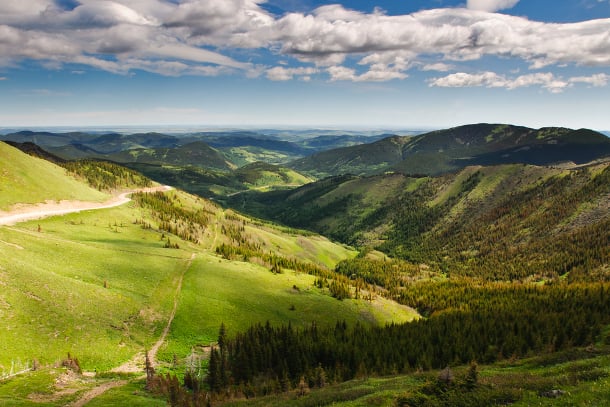
It was the value of forest timber that attracted the first settlers from the increasingly crowded Utah and Montana territories to what is now Alberta in the late 19th century. Flush with new technology and the era's enthusiasm for exploiting "undeveloped" resources, they launched a century of full-throttle extraction that has altered virtually every centimetre of the former landscape.
Changes in land cover, forest mix, and the regularity of fire and flood, have altered the ecosystem which once allowed the Caribou, Bull trout and others species to thrive, to the point that what remains is "not the real deal any more," Paszkowski says.
It is, for one thing, generally a much younger forest. Over the decades loggers removed most of the trees more than 70 or 80 years old, whose trunks supported rich crusts of lichen that caribou could rely on for winter forage.
Loggers, and later farmers, also sent plumes of disturbed soil down creeks newly exposed to the sun, clogging the fine grains of clean gravel that Bull trout need for nest-building and warming the water in many sections beyond the cold-water species' tolerance.
In the last half-century, as forestry activity continued to chase the region's larger mammals from one refuge block of older growth to another, a new threat arrived. The explosive growth of oil and gas exploration sent seismic crews to virtually every corner of the foothills, cutting metres-wide, clear-cut corridors through hill and dale.
"Caribou have adapted for thousands of years to live in old, dense forest," Wheatley observes. "This kept them away from the most efficient predator in the system, which is wolves. Until you start exploring the forest for oil and gas, and you create trails [that] made it easier for wolves to encounter caribou."
Some foothills herds, Wheatley believes, have been losing members to wolves and other stressors at the rate of five to 10 per cent a year. At that rate, "your population is gone in 10 years," he says.
Seismic lines and road networks have also allowed humans on ATVs or snowmobiles year-round access deep into what remains of the heavily altered ecosystems. And as Paszkowski notes, "any human activity is probably not good for caribou, nor for grizzly bears."
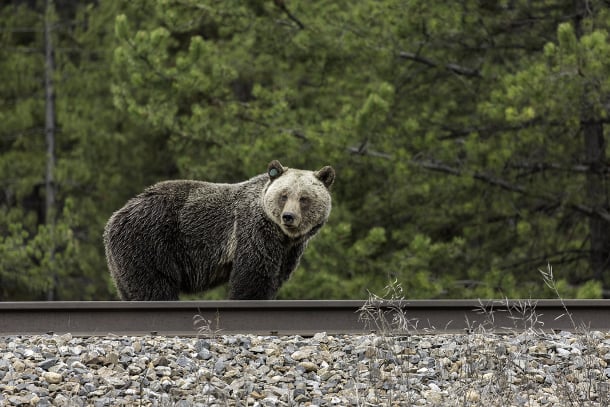
The bears are the object of illegal trophy hunting, but a more lethal factor may be road kills and freight trains -- especially those carrying grain. Attracted by fallen grain alongside tracks, even the world's most powerful bear meets its match in a diesel locomotive.
Nowhere left to go
Overarching all of these threats to the foothill refugees, ecologists say, is an even less obvious factor: fire -- or rather, the way European settlers in the last century and a quarter have altered its rhythm.
Once relatively frequent, relatively small fires cycled through older stands of foothills forest. Caribou and many other animals could avoid their conflagration, returning later to the newly refreshed open meadows and young forests the fires left behind. Scorched trees that fell into creeks created shelter for Bull trout spawning beds.
But viewing forest fires as destructive to timber value and threatening to settlements, provincial governments have invested heavily for decades in their suppression.
Now, the former natural cycle has been irrecoverably disrupted. The mosaic of open meadow, parkland and denser forest is out of balance. Remaining forested areas are unnaturally old, and dense with unburned fuel. When fires do ignite, they burn more deeply, far wider and for longer.
Outside of protected areas, forest managers are experimenting with re-introducing smaller fires through controlled burns. But those are risky, and despite their name may run out of control, threatening the very last sanctuary for fugitive wildlife.
The foothills' few protected areas, Wheatley worries, "are too small for both fire and the animals. We've run out of natural capital to play with if we want to put fire back into the landscape."
The caribou, like the Prairie grizzlies and the Bull trout beneath the winter ice, have nowhere left to go.
*Spelling of Grande Prairie corrected Feb. 21 at 5:30 p.m. ![]()
Read more: Environment





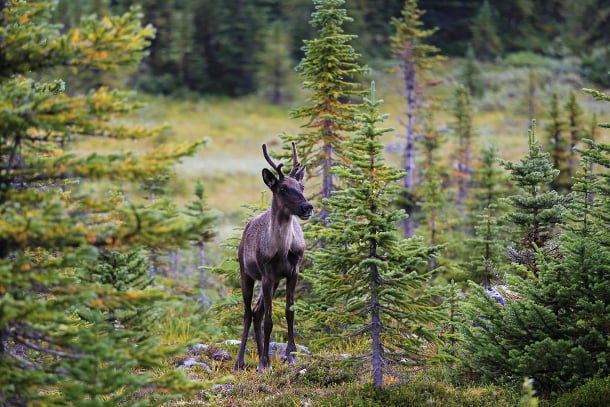





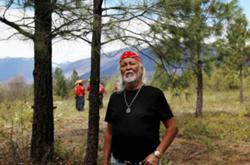

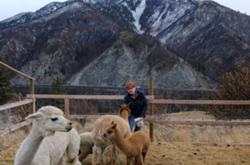




Tyee Commenting Guidelines
Comments that violate guidelines risk being deleted, and violations may result in a temporary or permanent user ban. Maintain the spirit of good conversation to stay in the discussion.
*Please note The Tyee is not a forum for spreading misinformation about COVID-19, denying its existence or minimizing its risk to public health.
Do:
Do not: